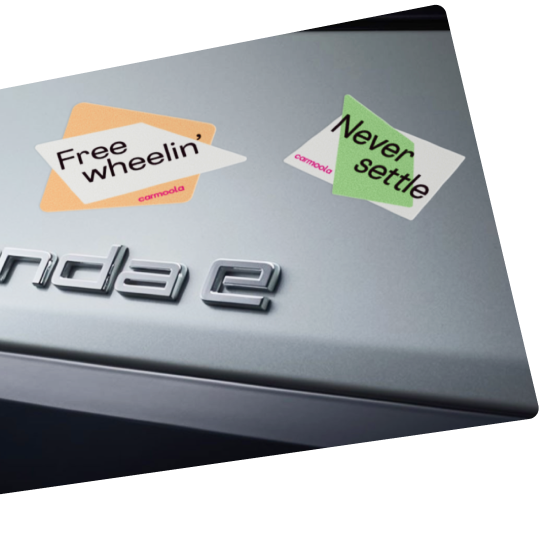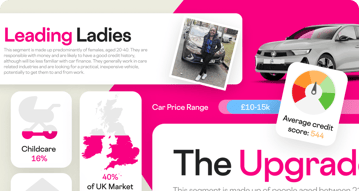What's the Difference Between an Electric Car and a Hybrid?
The electric car industry is developing at a very fast rate. This is good news for the car industry as a whole, and also for car buyers because they will have many options to choose from. Many drivers are now making the switch from conventional petrol and diesel cars to more environmentally friendly vehicles. But with this wide range of choices, car buyers are often confused about electric cars and hybrid cars.
If you’re considering getting a green car 🍃 you may have already encountered various car models that are labelled as fully electric, hybrid, mild-hybrid, plug-in hybrid, or another similar term. Your first question is probably, “What’s the difference between an electric car and a hybrid?” And that’s a good place to start. Let’s compare these two types of eco-friendly cars and then also learn about the different types of hybrid vehicles.
Electric Cars vs Hybrid Vehicles
What's an Electric Vehicle?
When a car is fully electric, it means the car runs completely on electricity alone so it has zero Carbon emissions and helps to reduce air pollution in our cities. It has a battery where the electricity is stored and an electric motor to drive the wheels. To top up an electric car, you have to plug it in using a charging cable. The power source could be the usual wall socket, but you may also have a dedicated home wall charger installed in your driveway. Another option is a public charging station that could even be free to use. Some of the popular examples of electric vehicles are the Tesla Model 3, Nissan Leaf, and Renault Zoe.
What's a Hybrid Car?
Now, how about hybrid cars? Hybrid cars are also eco-friendly vehicles because they consume less fossil fuel than conventional combustion-engine cars. Hybrid vehicles use a combination of petrol and electricity to make the car run. Some hybrid cars cannot run on electricity alone. Instead, the electric motor gives a boost to the conventional petrol engine so that the car is more fuel-efficient.
Hybrids also have the capability to recharge their own batteries which then power their electric motors. This means you don’t need to plug them into an external power source. Some of the well-known hybrid cars are the Toyota Prius, BMW i8, and the Mitsubishi Outlander PHEV. You can drive a hybrid using electric power only for short distances. This is perfect for driving in the city. It also saves you money because your car consumes less petrol.
What's the Main Difference Between Electric and Hybrid?
The key differences between an electric car and a hybrid is that EVs only run on electricity but hybrids have both an electric motor and a combustion engine. Hybrid cars will still emit greenhouse gases but not as much as a pure diesel or petrol vehicle. It’s a greener choice when compared to conventional cars, and it’s also a good option for drivers who want a more eco-friendly car but are not quite ready to go full-electric.
Types of Hybrid Cars
Not all hybrid vehicles are the same. There are mild hybrids, parallel hybrids, plug-in hybrids, and range extender hybrids. It may seem overwhelming at first, but once you know their main characteristics, it will be much easier to start thinking about which among them is most suited for your driving needs. Let’s start!
Battery Electric Vehicle
This type of electric car is a “true” EV because it only uses electric power. It stores electricity onboard with its high-capacity battery packs. The battery pack doesn’t only make the car run but it also provides power for all onboard electronics. To charge the battery pack, the car has to be plugged into an external power source such as a public charging point or a dedicated electrical outlet at your home.
Hybrid Electric Vehicle
Hybrid electric cars have two-part drive systems which means they have the conventional fuel engine as well as an electric drive. They have an internal combustion engine, fuel tank, transmission, battery pack, and electric motor. Some hybrid electric vehicles only have a small electric motor and battery pack that allows the vehicle to run at low speeds. Other cars in this category may have bigger electric drives and smaller fuel engines. The battery packs are charged through regenerative braking or through the alternator and not via an external power source.
Mild Hybrid
A mild hybrid car has an electric motor, but it’s not powerful enough to make the car run on electricity alone. The best that it can do is to assist the combustion engine during difficult acceleration. It also helps the car run smoother in start-stop traffic that’s common in congested city streets. The combustion engine will automatically turn off while coasting, braking, or when the car is not moving.
A mild hybrid system allows the car to be more fuel-efficient. Mild hybrids are more affordable than full hybrid vehicles, however, they produce more exhaust emissions since they rely more on their internal combustion engines. Nonetheless, mild hybrid vehicles are a good choice if it’s your first time transitioning to an environmentally-friendly car.
Parallel Hybrid
A well-known parallel hybrid is the Toyota Prius. This type of hybrid can run either by electricity alone, with a combustion engine solely, or both combined. The Prius, for example, goes full-electric when the speed goes up to 15mph, but its range is only 1.25 miles. Whenever you press the brakes or decelerate, the car’s regenerative braking system will recover that energy and then store it back in the battery.
Plug-in Hybrid
Plug-in hybrids are much like hybrid electric cars. What’s different about them is that they run more on electricity and not fuel. They have bigger electrical drives as well as battery storage capacity than hybrid electric cars. This means they have a smaller internal combustion engine that runs on either petrol or diesel. The electric motor is more powerful, and you can drive it for longer distances, around 15 to 30 miles, with just electricity alone.
Plug-ins use the fuel engine when the power from the battery packs is already low or when it is necessary to replace the electric drivetrain when driving on motorways where more power is needed. You can drive a plug-in hybrid electric vehicle using electricity alone since you can charge it from an electrical outlet. This is a more eco-friendly car type among hybrid vehicles.
With this type of hybrid, you’d have to recharge the battery by plugging it into an external power source like a wall socket. It can still get power from regenerative braking, but it is still ideal to charge it properly like a fully electric car. If you’re looking for the midpoint between a hybrid and an electric car, the plug-in is your best choice.
Range Extender Hybrid
A range extender hybrid car has a small petrol engine and a battery. The combustion engine is used as a generator only, producing electricity that allows the battery to be recharged. This means the engine does not have enough power to drive the wheels. The best example of a range extender hybrid is the BMW i3S. With its hybrid system, you can get an additional 90 miles of range compared to what the regular BMWi3 is capable of.
Should I Get a Hybrid or an Electric Car?
If you’re not yet sure which one to get, electric or hybrid, then the best way to go about it is to assess your driving needs. For example, if you drive longer distances, then you may want to have a hybrid car so that you’ll have a smooth ride on motorways. For city driving, an electric car is perfect because you don’t have to worry about range or battery life because you know there’s a charging point around every corner. But this isn’t to say that electric vehicles are no good for long-distance driving because they are also capable of that.
If this is your first green car, you may want something that feels familiar. For some, having that combustion engine in their car makes them feel more comfortable in their driving, knowing that if they ever run out of battery, they can still drive the car using the combustion engine. Other than your driving needs, you’d also want to think about your budget. Hybrid cars are more affordable than full-electric vehicles. However, you still need to refuel them. While full electric cars are pricier, they’re more cost-effective to run because electricity is a lot cheaper than petrol or diesel.
Takeaway
When it comes to electric and hybrid cars, there’s a lot to choose from. It all depends on which one best suits your driving needs. If you only need to drive in the city, then you can choose a mild hybrid to start. If you need a car for long drives, then maybe you can consider a hybrid electric vehicle since they have bigger combustion engines for longer distances.
Electric cars and hybrid vehicles are great options if you want to have a smaller carbon footprint. You can help reduce air and noise pollution in your city by choosing a green car. Even if a hybrid still emits greenhouse gases, it is less polluting than the usual petrol or diesel car. You can start with a hybrid car, and then down the line, you may find that you’re comfortable driving a full-electric car already. When shopping for a green car, take the chance to test drive it, so you’ll know which type of vehicle you like most. 👍😀







